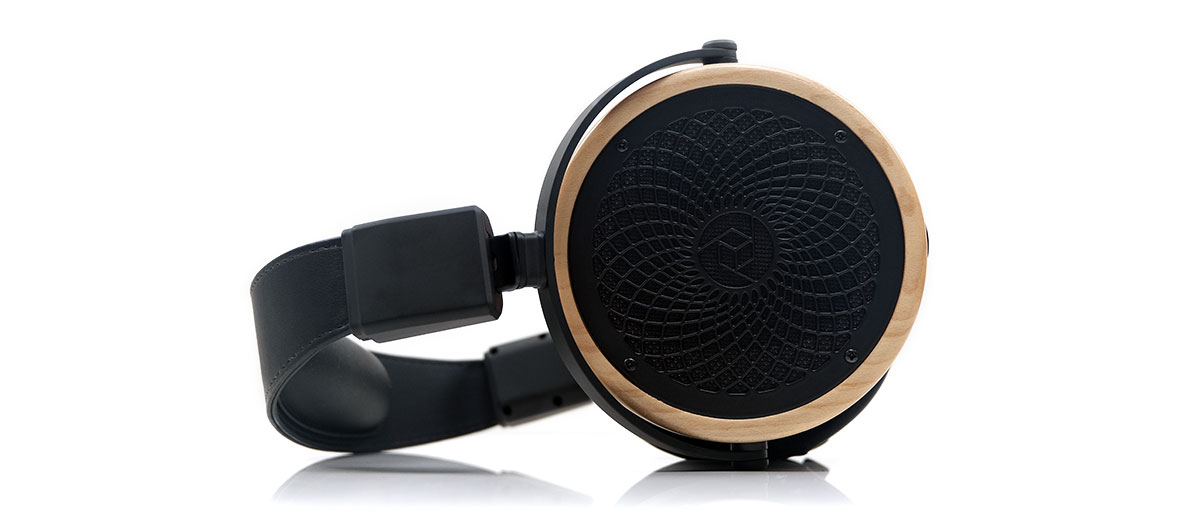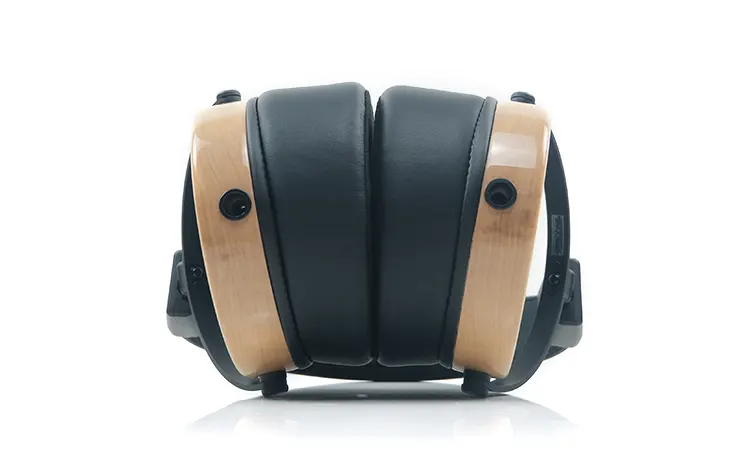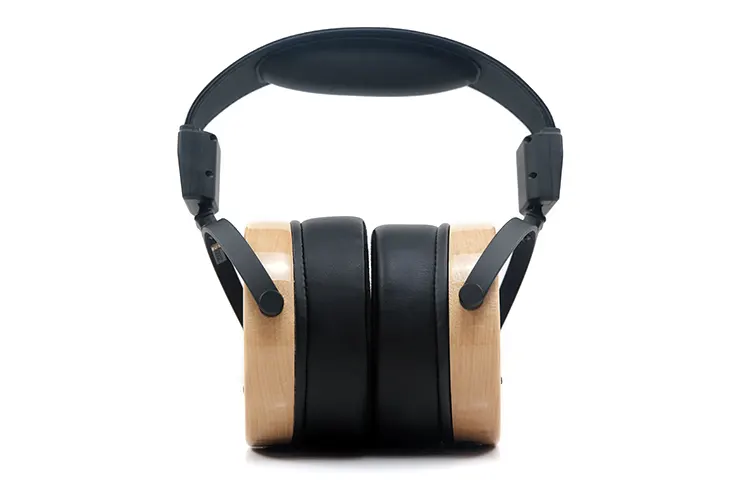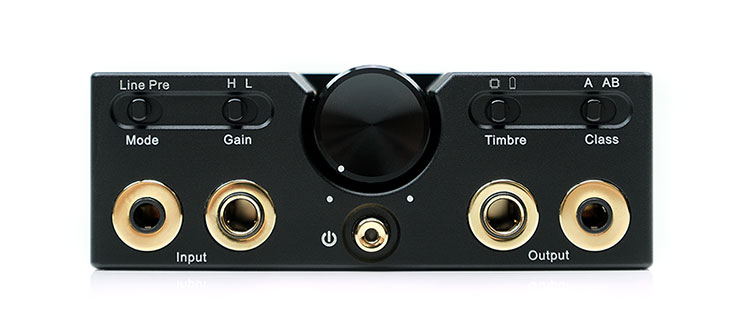Sound Impressions
Summary
I previously described the flagship RAD-0 as an absolute ‘riot’ with my 80’s rock collection. Well, the MPL-0 is more the ‘Summer Of Love’ mixed in with a weekend in Ibiza for good measure.
What does all that mean? Well, the MPL-0 is still a weighty-sounding headphone with a solid planar bass that extends deep with excellent power. However, it’s also a headphone that sounds more relaxed, slightly darker through the mids, and with less of an excitable lower-treble overtone.
Weighty? Yes, but not as punchy as the flagship and softer on both instrumental and vocal note leading edges. For some, it also offers a more natural timbre for percussion albeit lacking the same energy as the RAD-0’s equivalent.
The MPL-0 does dip noticeably through the mids, more so than the RAD-0. Vocal performances and anything through the 1-3k range will take a noticeable step backward in both imaging and presence.
As result, you will perceive a more distant staging positioning than the more intimate RAD-0. That, for me, makes the MPL-0 a more suitable choice for arena-level audio and synthwave in particular where you can pick up on a treble curve that is not as dipped as the RAD-0 around 7-8k
The MPL-0 is not hard to drive and it will respond to an amplifier’s unique character quite well. A good clean-sounding punchy amplifier or one that works wonders with staging such as the Cayin HA-300MK2 will help retain some essential clarity and space from the MPL-0. A quality I think is essential to enjoying its sound signature.
Amplifiers like the Feliks Audio Envy will strengthen the bass response beautifully, strengthening the sub-bass and vocal presence but will also shrink the sound stage relative to the Cayin performance.
Frequency Response
The MPL-0 follows a very similar bass FR to the RAD-0 from 20Hz to around 300Hz. Rosson Audio has not messed around too much with that excellent flat linear planar bass response that I loved from the flagship.
It will sound a little different in its tonal character on the MPL-0 coming across as voluptuous and slightly warmer in tone and probably the first thing you will notice in terms of imaging forwardness also.
However, that’s more down to how different the response curve is through the mids and treble which is noticeably more dipped from 1-3k compared to a gentler downward slide over the same response range from the RAD-0.
That dip, in turn, is complimented by a gentle treble rise from 4-5k up to 10k. There are a few peaks and valleys but nothing peaky nor is it quite as abrupt as the RAD-0’s 6-8k dip so for me it’s not as forward sounding but can give some nuanced sparkle when called upon.
Hence why I like the MPL-0 a lot for synthwave genres where striking a balance between attaining good reach without too much synth shrillness is important.
Timbre
The MPL-0 has a planted natural-to-warm sounding timbre which does remind me a little of the older darker Audeze house sound on the LCD-2 which still has a lot of fans, including me.
It shoots more for a planted low-end with excellent sub-bass rumble rather than overt mid-bass punchiness. Lower-mid instruments have some really nice weight and body, especially rhythm guitar and lower-pitching percussion passages though slightly less in terms of slam when compared to the flagship RAD-0 equivalent.
The smoother tuning does mean there is a little bit of softness in note leading edges, with more of a liquid-like or laid-back delivery and an even-harmonic bias. It does sound quite different from the RAD-0 delivery which had a stronger lower-treble overtone that got picked up more readily though it’s more elevated midrange.
That even-harmonic bias is also evident in the treble tuning which sounds a little more filled in and tonally smoother than the RAD-0.
It extends quite well but it’s not hugely amplified so it’s not something that will upset percussion and synth-heavy timbre delivering more of a dreamy or sweeter overtone on the highest octave or any instrument’s upper-harmonic order.
Staging & Dynamics
Compared to the RAD-0, the MPL-0 staging is less intimate, leading with its low-end as its most forward point in terms of imaging and everything above just scaling a bit further back, out, and in front of you.
I have no issues with the dynamics of the MPL-0 bass performance and it does respond really well to amplifiers that deliver the goods on the low end though it is less about punchiness and more about depth and rumble.
The treble does have some subtle uplift and here I think the balance is really good, giving you just enough sparkle and headroom to ensure the tone remains smooth without sounding dull or hitting a brick wall.
Probably the one criticism I have of the MPL-0 staging is that dip in the 1-3k region which robs vocal performances of the energy and presence I enjoyed with the RAD-0. It will sound darker and more distant through that region with imaging and spaciousness more to the average end of the scale.
I would pair carefully here as some amplifiers such as the HA-300MK2 improve on the space and stretch the staging a lot more than the likes of the Feliks Envy which instead focuses on improved depth and power but keeps the mids comparatively narrower and more congested sounding.
Synergy
Efficiency
The Rosson Audio Design MPL-0 is rated at 29Ω and 98dB @kHz SPL which should be defined as relatively efficient but still can scale with improved power and performance from amplifiers.
Though not quite as sensitive as headphones such as the 18Ω/100dB @1kHz rated Audeze MM-500, the MPL-0 is slightly easier to drive than the 32Ω and 94dB SPL @1kHz rated HIFIMAN Arya Stealth Magnet Edition.
It has the same level of efficiency as the flagship RAD-0 so you can expect more or less the same driving capability from both headphones. However, I did find myself pushing up the volume a bit more on the MPL-0 but this was more to do with its specific FR since I tend to prefer a prominent vocal level in my listening sessions.
The MPL-0 will also drive quite well from some decent portable pairings with the likes of the FiiO M17 and its cheaper portable amplifier sibling, the Q7 as well as the Shanling H7 having more than enough power to drive them quite well.
Portable Pairings
My personal preference was to match the MPL-0 to a clean and punchy-sounding amplifier or one with good staging capability. Nothing too relaxed or warm sounding to ensure the MPL-0 low-end had plenty of depth and pace but at the same time keep the mids imaging and separation performance as strong as possible.
Portable amplifiers such as the Cayin C9 in Class AB mode or the Shanling H7 did very well in terms of mids clarity, perhaps more so than the FiiO Q7 though the M17 in DC Mode was very dynamic and punchy sounding also. The C9/N7 combo produced the purest treble tone and presence with the MPL-0 for the smaller portable rig pairings.
The H7/MPL-0 treble was good, but the low-end felt a bit too neutral and did not quite have the same richness and staging width as the C9/N7 combo. Not quite as balanced and deep sounding as the C9/N7 but then again, this is still a quality performance at a fraction of the price of the Cayin combo.
Desktop Pairings
I had a clear favorite with desktop amplifiers and surprisingly it was a tube amplifier, the Cayin HA-300MK2. It does wonders with the MPL-0 staging, stretching it out wide and giving it a superior holographic dimension to the likes of its nearest competitor, the Feliks Audio Envy.
The Lina, on the other hand, will give you a very clean and articulate sound from the MPL-0. It tightens up the longer decay from the HA-300MK2 and improves substantially in the level of detail you can pick up during performances. Tonally, this pairing with the MPL-0 was the most neutral and revealing of the amplifiers I tested with it.
The Envy will deepen the sub-bass presence and add a bit of gravitas to the vocal performance with the best bass fundamental of the three pairings. The MPL-0 sounds immaculate with EDM and R’n’B with the Envy and an equally punchy DAC behind it such as the Little Dot DAC VII.
However, this MPL-0 pairing had the narrowest staging width and was not as holographic sounding as the HA-300 MK2, nor is it as finely detailed as the Lina DAC and headphone combo.
Impedance Controls
If you have amplifiers with impedance selectors such as the Feliks Audio Envy or the Cayin HA-300MK2 you can fine-tune the performance further.
Neither impedance selector works in the same way, so with Feliks, the highest impedance output level is generally advised for planar headphones. This will give the MPL-0 the best performance for dynamic range and low-end extension as well as improve the MPL-0 vocal presence.
For the HA-300MK2, the lowest impedance setting (since MPL-0 is 29Ω) is the ideal setting and with this, you get a fairly neutral performance. However, I kind of like pushing it to the medium impedance rating. You get a bit more vocal bloom and vibrance at lower volumes with this pairing and it also stretches out the sound stage a lot more.





